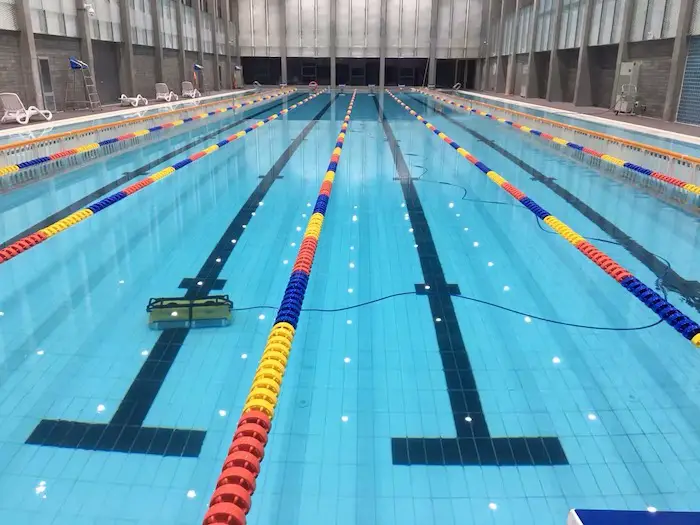Your pool is a lifetime investment, and given that you use it often, it is important that you have it cleaned regularly. One of the methods of getting rid of dirt and debris is using a pool vacuum cleaner. Again, the vacuum cleaner is an expensive investment, and thus, you want to maintain it by using it well and keeping it safely.
So, can you leave your pool vacuum in the water? Well, it is not recommended to leave any type of pool vacuum cleaner in the water; remove it especially when adding chemicals in the water.
Also, try to remove the vacuum from the water whenever you can because with time you will start noticing discoloration, and in worst cases, breakdown of some parts of the cleaner. As for the manual vacuum cleaner, it would be unlikely to leave it in the pool because every time you assemble it to clean, you have to disassemble it once done.
In this article, we will give more details on the question of leaving the vacuum in the water, types of pool vacuums, and other related questions. Keep reading and learn more.
Types of Pool Vacuum Cleaners
We cannot stress enough the necessity of cleaning your pool regularly. If you take long intervals to clean the pool, it will take you more effort to get it cleaned thoroughly. Thus, it is better that you clean it regularly, especially if you use it every other time, and if the environment it is situated contributes to it accumulating dirt faster.
That said, it is important to learn about the options of pool vacuum cleaners available. There are two major types of vacuum cleaners for the pool namely:
- The automatic pool cleaners
- The manual pool cleaners
Automatic pool cleaners
Initially, automatic vacuum cleaners would only stir the debris in the pool, with the hope that it would get to the main drain. However, today these cleaners actually circulate as they vacuum the debris keeping the pool clean as long as it is in operation.
Under automatic pool vacuums, we have three major categories as seen below:
a) Robotic

The robotic cleaner like this is an independent entity, and it does not need a pump, filter, or any hose connection. It is easy to operate because you will simply put it in the pool and it will operate on its own. However, you should remove it from the pool and store it under a shade when not in use.
The best thing about these pool vacuums is the ability to clean nearly any type of debris while at the same time being energy efficient. Additionally, it does not have to be attached to the pool.
b) Pressure-Side Pool Vacuums

There are two types of pressure side vacuums; one works with the help of a booster pump while the other one works independently without need for the main circulation pump. The water being pumped or pushed back into an inground pool usually powers the pressure side cleaners.
These types of pool vacuums are advantageous in that they can run on a timer while handling larger assortment of debris. They also are not clogged easily. However, you shouldn’t leave it in the water 24/7, especially when adding chemicals in the water.
c) Suction Pool Cleaners

These pool vacuums clean by suction. They are connected to a suction line or pool skimmer and they will move around the pool collecting the debris and releasing it through the filtration system of the pool. They are cost-friendly, but along the way you may have to replace some of its moving parts.
These types of vacuums operate on the existing filtration system, moving in a specific pattern to get the entire pool cleaned. More importantly, they are the most affordable of the three types of vacuum pool cleaners.
Manual Pool Vacuum Cleaners
The automatic pool vacuum comes in handy for the general pool maintenance. However, in some situations, you may require a more hands-on approach. Say for example, there is a sandstorm that leaves too much debris in your pool, or a case where you want to eliminate an algae problem. In such a case, a manual vacuum is your best bet.
The manual vacuum components include a vacuum hose, a vacuum head, and a telescoping pole. You only need to connect the hose to the head on one end, and the other end to the water intake nozzle on the pool skimmer.
Then submerge the vacuum head in the pool and let the hose fill with water to create a suction, which holds the head tight on the floors or walls of your pool.
Manual pool cleaners are quite affordable compared to their counterparts on the automatic side. This is not to mention that they are the only pool cleaner option that can effectively tackle the stubborn algae and spot clean the pool.
So, To Leave or Not To Leave a Vacuum in the Pool
Most people like to leave their vacuums in the water, with the argument that they will be in use again the following day. as mentioned before some can be left in, but with the risk of discoloration from the chemicals. Additionally, leaving your vacuum for too long in the pool may accelerate the wear and tear of some parts, which can reduce the lifespan.
The best thing to do before you become too lazy to take out your pool vacuum from the water is checking the manufacturer’s recommendation. Also, ensure that before adding chemicals, you first remove your vacuum cleaner from the pool.
Related Questions
How often should you vacuum the pool?
Generally, you should vacuum the pool as soon as it accumulates debris, leaves, and other forms of dirt. This could be after a storm, weekly basis, or even every 2 to 3 days if the location of your pool contributes to so much debris in the pool.
Can you remove algae through vacuuming?
Once algae develop in a pool, it can be difficult to remove and vacuuming alone may not get rid of it completely, especially using the automatic vacuums.
However, it will prevent it from developing in the first place by keeping the water clean and free from debris, thus eliminating the conditions that favor its growth. But with a manual vacuum, you are well on your way to removing those stubborn algae.
See Also:
How Long To Run Polaris Pool Cleaner
8 Best Vacuums For Above Ground Pool
4 Best Pool Skimmer For Dog Hair


